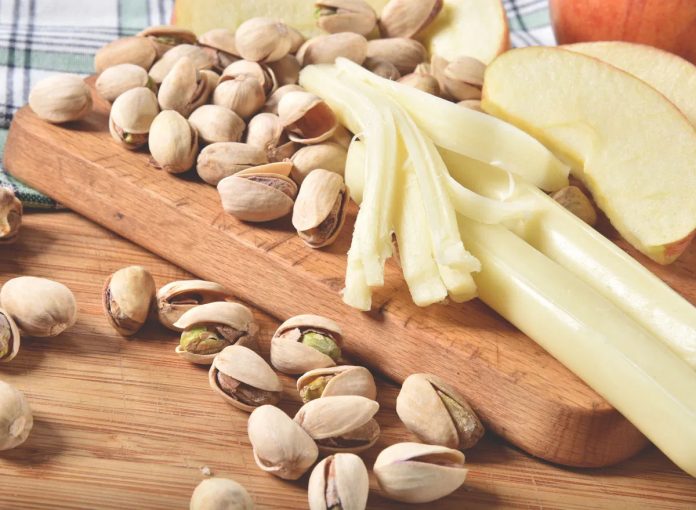There are some people in this world who stick with three square meals a day. For the rest of us, snacks are a very important part of life.
I probably don’t need to tell any fellow snack experts out there that snacks can come in many different forms and serve many different purposes. A forkful of last night’s leftovers straight out of the fridge can be a pretty fantastic late-night snack. Those office cupcakes that appeared out of the abyss can be a delicious and spontaneous snack. I could go on…
And while basically anything can be a snack if you try hard enough, it’s also true that snacks can serve the really important function of satiating hunger and sustaining energy levels from one meal to the next. And if that’s your goal, then you’re probably looking for healthy snack ideas that will fit that bill while still being delicious and not boring.
Substantial, nutrient-packed snacks can be an integral part of how we fuel our bodies throughout the day. Plus snacks are a great opportunity to pack in extra nutrients or food groups you’re not getting at your meals, Kansas City–based dietitian Cara Harbstreet, M.S., R.D., L.D., tells SELF.
But what does a healthy snack actually look like? Well, that depends on how you define healthy; trying to come up with one universally healthy snack is like trying to come up with one universally healthy meal or diet: It’s not that simple, because what’s healthy for one person in one situation may look completely different from what’s healthy for another person in another situation. What makes for a filling snack is also subjective and will depend on factors like your metabolism, your activity levels, and your overall diet.
“A lot of times, especially coming from diet culture, we have in our minds that a snack has to be a certain number of calories,” Harbstreet says. “I encourage people to broaden their definition of what a snack can be…anything from a few bites of something you’re craving to a mini-meal.” In other words, it’s about what fills you up and makes you feel good.
When choosing healthy snacks, think about the kinds of foods and nutrients that will help satisfy you. To that end, San Francisco–based dietitian and SELF columnist Jessica Jones, M.S., R.D., C.D.E., generally recommends people include at least two different food groups in their snack. “You’re going to want something that’s a little more comprehensive, and those combination snacks are going to give you more bang for your buck in terms of energy,” Jones tells SELF.
Toronto-based dietitian Abbey Sharp, R.D., advises clients to prioritize protein, healthy fats, and fiber in their snacks, as they tend to be broken down in the body more gradually. “Those are really those hunger-crushing compounds that will help sustain you when you have that energy dip or need to make it to the next meal,” Sharp tells SELF.
And of course an ideal healthy snack also depends on the setting or situation—the time of day; your levels of energy, hunger, and activity; your kitchen access, etc. Do you have a few minutes to make something, or do you need to grab it and go? Are you trying to power up for a workout, or just keep the 3 o’clock hunger beast at bay between meetings?
So we asked the R.D.s for examples of healthy snacks that apply those general healthy-snacking principles to real world contexts. Here are their recommendations.
In the morning
It’s 10 a.m., you’ve got two-and-a-half hours until your lunch break, and your stomach is grumbling. It’s time for some complex carbs and protein, according to the R.D.s. Fruit, whole grains, and eggs are generally bomb options for an a.m. snack in terms of both nutrition and palatability. “A lot of people don’t want to eat a super-savory or heavy meal in the morning,” Sharp says, so these mini-brunch options are great. “They give you that boost of energy to hold you over until lunch.” Here are three different options:

























